Starting from scratch – Then and now
Laying out garden beds in clay and decomposed granite is the way you start when faced with new construction in the Sierra Foothills. How do you possibly begin a garden?
Many house pads are scraped clear of topsoil and planting is not easy without replacing all the soil. Add as much mulch, oak leaves and other leaf litter to the soil that remains.
If you don’t know what to plant, lay down a couple inches of good mushroom compost or a mixture of several types of soil amendments and pine mulch. Pine needles and oak leaves can be used since they naturally are found here in our hills.
I marked out garden beds around the house with logs left over from firewood we cut. This also served to mark where the weedeater was not to go.
Learn as much as you can while your beds ‘sleep.’ Do you have deer, gophers or rabbits? Will you need a fence for a vegetable garden? Do you have oaks and pines which want little planted underneath? Do you need shade?
Trees first
If you need trees planted, think about whether they should be evergreen or deciduous. Deciduous trees can offer shade in summer and allow sun when winter comes. Plant them on the south or west of your home. We planted a beautiful evergreen Sequoia ‘Soquel’ at the head of our driveway which now provides shade for parked cars. Sequoias grow fast can can solve privacy problems when neighbors are close.
Front beds before, in 2006
Decide where shrubs can be planted. use groupings of three or five different ones as a ‘backbone.’ Then when they are installed, you can think about perennials, ground covers and annuals. My three or five, were a Muhgo pine, a weeping spruce and Oregon grape, a holly-looking CA native. I also planted three or four ground cover junipers in these front beds on either side of the front door.
Front garden beds, just one year later
Back entry, before in 2006
Back entry after, in 2007
Friends in our Mountain Community around Oakhurst come in the back door! I planted a Bird’s nest spruce, a redbud tree and a Wallflower, ‘Bowle’s Mauve.’ I found at Intermountain Nursery a couple six packs of Germander, Teucrium chamaedrys ‘Prostratum’, which has performed splendidly as a ground cover and filled in all the space between the shrubs.
South garden beds and slope
The bedroom end of the house faces south and also has the smallest windows for less heat in summer. Although I did not replace the soil for these ‘close to the house’ beds, I regret that because it has delayed the growth of the plants due to compacted poor soil, filled with concrete rubble. On this side of our house one ‘Iceberg’ climbing rose is climbing and the other has just sat. I have added loads of mulch and manure to the soil, turning this over each year to slowly improve it.
South end of the house, before in 2006
Front Bank
Many of us have clay banks with retaining walls, built because our house place is on a slope. These banks are hot, dry and a big problem to get anything started! I began by raking the native leaf litter, anything around, onto the bank to cover the bare clay. I planted manzanita, creeping sage and Foothill penstemon. they have started slowly, but now after five years are reaching full size. The Manzanita ‘Howard McMinn’ has done especially well in hard clay. other good plants for banks are rockrose, rosemary and lavender.
Front Bank, before in 2006

2006-6 Bank with deer who pass up the first lavender and rosemary planted there. These need only monthly water.

2011-9 Front bank, planted with a lavender field, rosemary, lavender, manzanita, creeping sage ‘Bee’s Bliss’ and foothill penstemon.
Back garden slope

2006-6 Back slope needs deep rooted plants to hold it and prevent erosion. One drip line with sprayers was installed at the top.
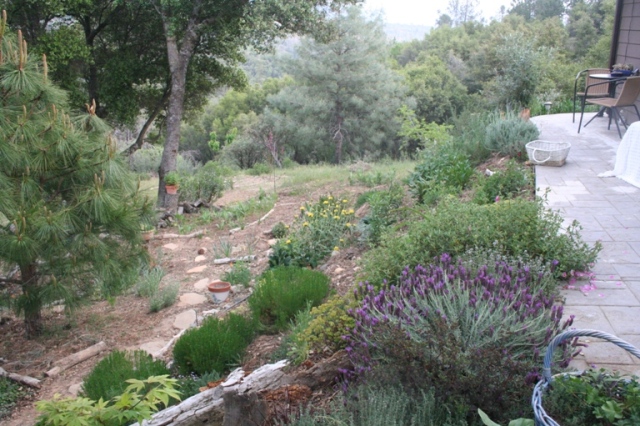
2008-5 Back slope with lavender, rosemary, rockrose, aster, rose, Cleveland sage, santolina, atemisia and Jeruselem sage.
Ask neighbors with what they have had success, but don’t be discouraged if they say, “Nothing is resistant to deer, or that they have ‘no luck with anything.’ It is possible to read and learn from experienced enthusiastic gardeners to have a beautiful, colorful garden for your new home. See my deer resistant and drought resistant plant lists for a start.= to a beautiful, easy care garden.

2014 The back slope , lime green Artemisia, Rosemary, Rockrose, yellow Jerusalem sage, Iris, Lavender and Butterfly bush
Many of my plants came from Intermountain Nursery. They specialize in CA native and other plants perfect for our foothills with a Mediterranean climate. Western Sierra Nursery also has many plants that are deer resistant and in our zones 6-8. True Value Home Center in Oakhurst, where I work this summer, has a drought tolerant section with plants meant for our hot dry season.
Nov 2013- Newsy note: I’m finding out just how easy care my garden is this year with 40 hours cut out of my usual gardening week! The weeding was done in a week or two on days off and now if I can keep to a hand-watering schedule for the newest plants in the lower native gardens, I believe that they will all make it through the hottest weather.
I’m still mulching with a thick layer of pine needles, acquired free from friends in Bass Lake where they need to remove them from their roofs by law.
*Updated August 2106



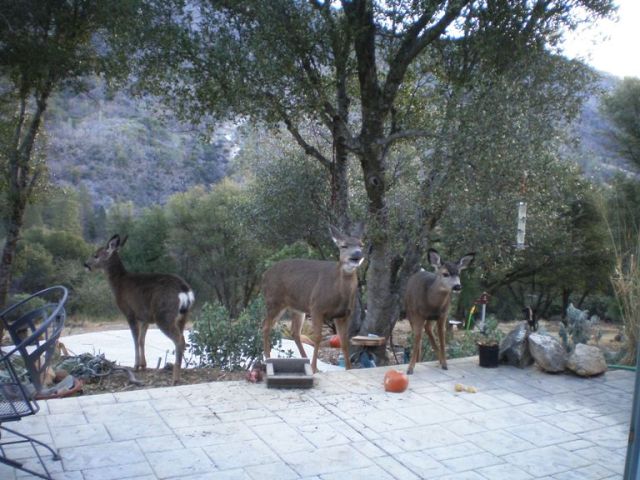

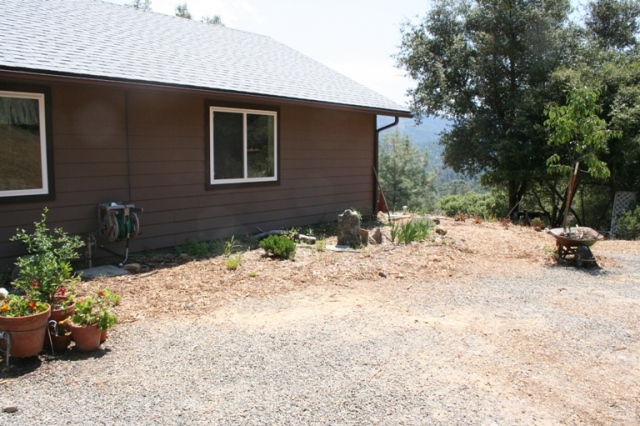

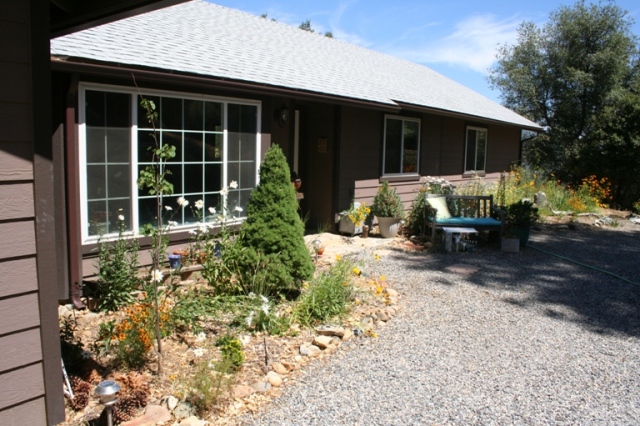

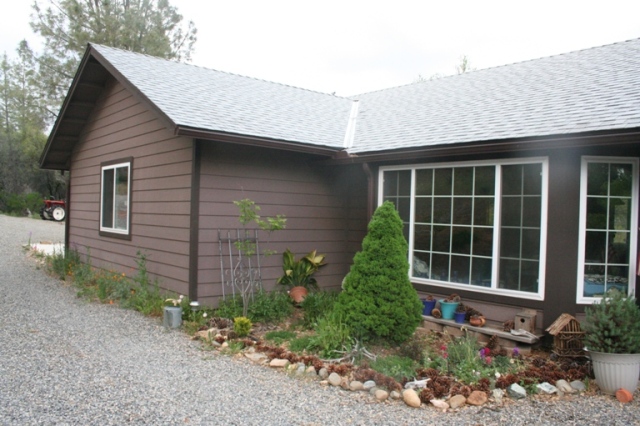

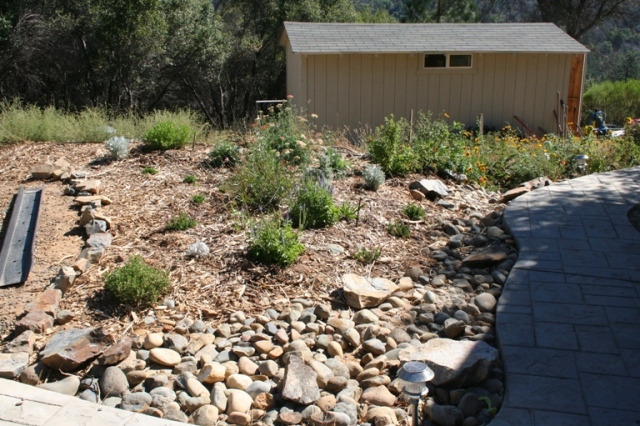

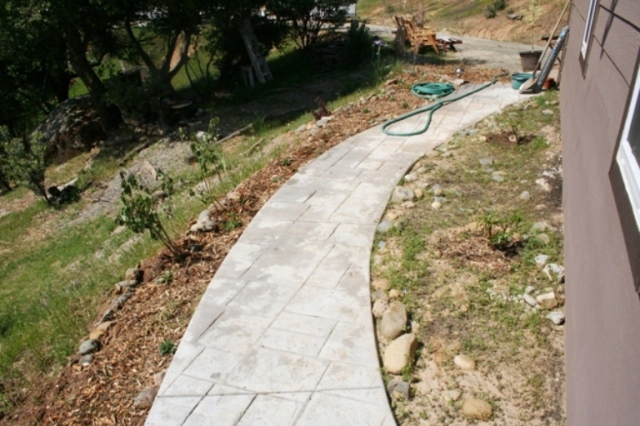





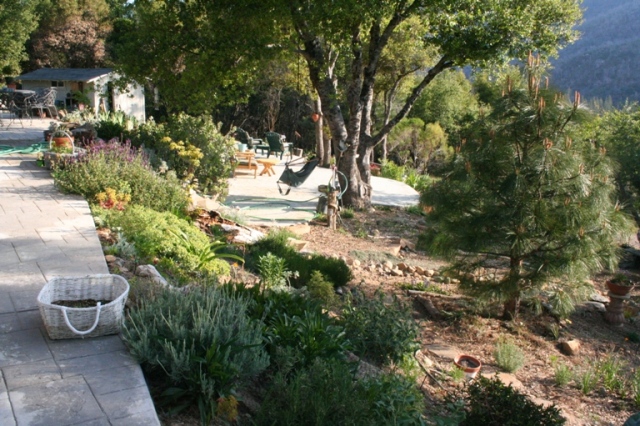


3 comments